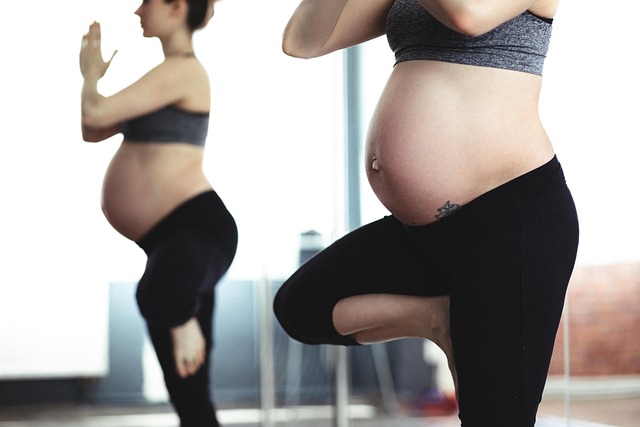We’ve all faced the uncomfortable sensations of sweat—whether it’s while chasing after a playful toddler, fretting about a missed nap, or simply feeling anxious about life’s demands. If you’re human, sweating is part of the experience. But what happens when sweating becomes excessive and uncontrollable?
“I even sweat through my jeans,” shares Mia, a woman who has battled excessive sweating, known as hyperhidrosis, for much of her adult life. “It’s what I call ‘vagina soup’.”
For many, hyperhidrosis can be an incredibly embarrassing ordeal. Instead of sweating just enough to regulate body temperature, those affected sweat profusely, as their sweat glands are perpetually on overdrive. Even minor physical exertion or emotional changes can lead to soaked shirts, slick palms, or a shiny face. And yes, the discomfort can extend to the groin area, leading to what Mia humorously refers to as “vagina soup.” In a society where sweating is often stigmatized, the burden of chronic excessive sweating can lead to significant stress and embarrassment.
Approximately 15.3 million individuals, or about 4.8% of the U.S. population, suffer from primary hyperhidrosis. Others may experience secondary hyperhidrosis due to medications or underlying health conditions. Primary hyperhidrosis stems from overactive sweat glands, typically affecting specific areas like the underarms, palms, soles of the feet, and face. In contrast, secondary hyperhidrosis is characterized by more widespread sweating. Symptoms can begin during childhood or manifest later in life.
My first encounter with excessive sweating occurred shortly after the birth of my first child. While attempting to nurse, I was suddenly engulfed in a wave of sweat that started at the back of my neck and spread across my entire torso. Salty droplets streamed down my face, landing on my baby’s head as I hastily wiped myself with a burp cloth. Feeling drenched and anxious, I initially feared something was seriously wrong. After consulting my doctor, I learned that postpartum sweating is relatively common, triggered by hormonal fluctuations, leftover pregnancy fluids, and the stress of new motherhood.
While I knew my sweating episodes would eventually subside, they made me feel extremely self-conscious. Going out in public, I constantly worried that the sweat under my arms or across my stomach would become visible through my clothing. As I navigated the challenges of caring for a newborn, the added stress was overwhelming, leading me to spend much of that time at home.
For those with primary hyperhidrosis, this anxiety is a daily struggle. A 2016 study published by the International Hyperhidrosis Society revealed that many individuals reported decreased confidence and unhappiness, with 70% stating they frequently needed to change clothes due to discomfort and embarrassment. Decisions surrounding clothing choices, activities, diets, and even career paths are influenced by this condition, adding to the daily stress.
Identifying Primary Hyperhidrosis
So how can you determine if you have primary hyperhidrosis? Dermatologist Dr. Anne Roberts, a founding member of the International Hyperhidrosis Society, suggests asking yourself if you’ve experienced visible excessive sweating for at least six months without an identifiable cause, particularly in areas like the hands, feet, armpits, or face. If this resonates with you, check if you meet the additional criteria on the International Hyperhidrosis Society’s website.
Treatment Options
Managing excessive sweating isn’t as simple as applying extra antiperspirant. Many turn to oral medications, topical treatments, electrical therapies, or even surgical options. Botox, approved by the FDA in 2004, has become a popular choice as it blocks the chemical signals that trigger sweat production.
“I’ve tried Botox under my arms, and it worked quite well,” Mia recalls. “I considered asking my doctor about using it in other areas, but I wasn’t keen on that idea.” Understandably, the thought of needles in sensitive areas is less than appealing, even for those enduring discomfort.
While various treatments exist, they can be expensive and may not always be covered by health insurance. For instance, the cost of Botox injections for both underarms can amount to around $1,000, lasting between 7 to 16 months, according to the International Hyperhidrosis Society. While excessive sweating is treatable, the journey is often challenging and costly.
Supporting Those with Hyperhidrosis
If you encounter someone who appears to be struggling with hyperhidrosis, it’s essential to approach the situation with empathy. They are likely acutely aware of their condition and may feel embarrassed by it. Comments, even if made in jest, can severely impact a person’s self-esteem. The kindest response is to show compassion and understanding.
Conclusion
In summary, hyperhidrosis is a significant challenge for millions, impacting daily life and emotional well-being. Understanding the condition and its effects can pave the way for better support and treatment options. For those seeking more information on managing infertility, including resources on home insemination, check out this link. Additionally, you can find valuable insights on pregnancy-related issues at this link. For a deeper dive into hyperhidrosis, consider visiting this blog post.
